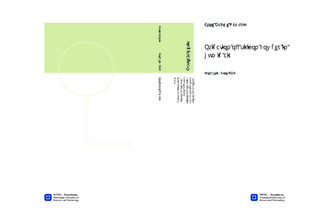| dc.description.abstract | Silicon undergoes oxidation at room temperature, causing a formation of an oxide layer on its surface. Gaining knowledge about the oxide layer formed during ageing, is valuable with regards to production of high quality ceramics, Si3N4, especially with for the slip casting process.In this work silicon powders were exposed to humid air at different temperatures for different periods of time. From the XPS analysis, the oxygen and hydroxide content were found to be higher for powders aged at higher humidity compared to powder aged at lower humidity. This was verified by the estimated oxide thickness, which was larger for powder aged at higher humidity. No obvious difference could be observed for short and long ageing time in low humidity atmosphere. Results from Raman spectroscopy showed a more amorphous powder after storage in humid air. A clear shift and broadening of the crystalline silicon peak were observed for powders exposed to air at low and high humidity. The powders aged in humid air were further reacted with water at pH 9.4 and temperature of 60°C. The onset time for hydrogen evolution was observed to be later for samples exposed longer times to humid air. This indicates that the reactivity of the powder decreases as the oxide layer formed during ageing develops. The amount of hydrogen evolved seemed to be dependent on the hydrogen evolution time rather than the time of exposure to humid air. This was verified by the surface area, which was about the same for all samples, showing only a slightly decrease for increasing exposure time. The oxygen content measured was linearly related to the surface area for the main section of the samples. Higher hydroxide content seemed to catalyse the aqueous oxidation reacting, resulting in an earlier onset time for hydrogen evolution and a higher hydrogen flow. This was stated by a higher surface area and higher oxygen content for these samples.Powder thermally treated, at 300 °C and 900 °C, were also investigated. XPS analysis showed a thicker oxide layer for powder treated at 900 °C. No hydrogen was formed in the aqueous oxidation of powder treated at 300 °C. This was verified by a low surface area.Regarding the slip casting of silicon powders, a defect free green body can be obtained by reducing the hydrogen formation. Based on the results found, this can be obtained by the formation of a passivation oxide layer on the particle surface, formed during ageing of the powders in humid atmosphere before processing.Higher humidity and longer ageing time seems to affect the development of the oxide layer formed on the surface more than low humidity and short ageing time. To minimise the hydrogen formation, it is crucial to be able to control the hydroxide concentration in the aqueous oxidation accurately. | nb_NO |

